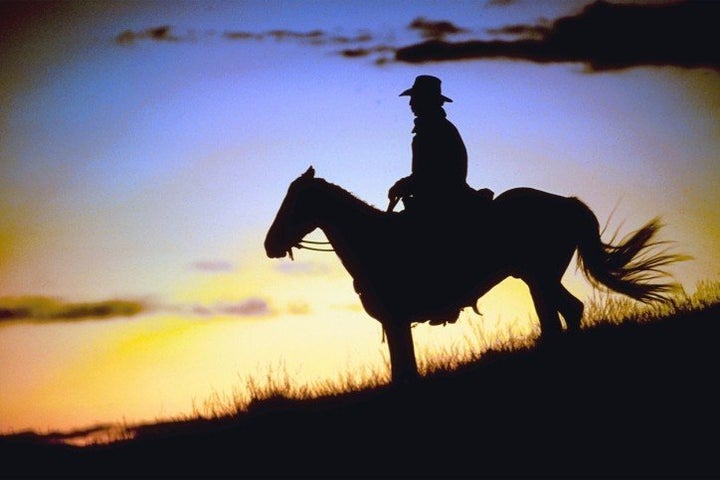
"Buck," a film about Buck Brannaman, directed by Cindy Meehl, in its own seemingly effortless and totally endearing way is a film about violence.
Violence comes in a variety of forms: physical, sexual, and emotional -- commonly in combination. Violence is visited upon fellow human beings -- young and old, family and friends, and random strangers -- and those creatures that fall under our control, be they dogs or cats and, case in point, in "Buck" it is horses.
Whole agencies are created, funded and staffed to protect against violence (e.g., child protection, elder abuse, cruelty to animals) and a vast criminal justice system of courts, jails, prisons, parole and probation exists to help contain it. Yet violence endures unmercifully.
The closer the perpetrator is to the victim the more corrosive the damage. Sadistic parents have a profoundly deleterious effect, as do siblings and other close relatives. The more persistent the abuse the greater its impact and without someone to step in to protect the deeper are the wounds. In the most chilling and counterintuitive of ways, people who are violent have been almost always themselves victims of violence, thus its transmission from generation to generation.
"Buck" is a documentary film about Buck Brannaman, nearing 50 and now a legend as a "horse whisperer" -- though that term hardly does him justice. He spends nine months of every year criss-crossing the USA doing four day clinics on how to be one with your horse. As one narrator put it, "... some horsemen have a handful of tricks, Buck has an arsenal." Though that too does not convey the essence of what he does, which is to inspire the person who brings his or her horse by teaching confidence and skill and compassion. To paraphrase Buck, it is not a problem horse he sees but a horse with a problem owner.
Rewind Buck's life, as the film does, and we see him as a blond haired, blue eyed boy, the younger of two sons, who was a child cowboy star at the remarkable age of four who even did ads on TV for a cereal brand. But this all-American family was ravaged by violence which reached full force after his mother died and his father, then an alcoholic, began to beat him and his brother every night, for years, until a football coach discovered the welts and called the local sheriff. He was taken in by the Shirley family (his foster mother is a featured character in the film) and given a chance to live without abuse and to learn a life of ranching and responsibility as part of a caring family that had as many as 23 (!) foster children, all boys. So begins his exit from the cycle of violence.
Buck finds his calling when as a young man he comes upon Ray Hunt, his great predecessor as a horse trainer. He witnessed that "breaking" a horse could be done without aggression or violence, long a tradition among horsemen. Buck's path was fashioned at that moment as he tells us in one of his many reflections throughout the film. He spends years learning from Hunt, modeling himself after what was 'the good father'. He would not be his father inflicting pain and terror but rather a person who could be firm, attuned, disciplined, kind and show how that could be done through the vehicle of training horses. And when you see that done, I assure you, it is a sight to behold.
What makes this film so extraordinary is not just how amazing a figure Buck is but the way the narrative illustrates how violence can be mastered. We witness Buck who leaves the legacy of violence behind (but not forgotten as he remarks) and the countless horsemen and women whom he has helped discover that you can make a horse dance or herd cattle without pain because in the end that horse wants to take pride in its work just as much as you do. The examples in the film of his skill with horses and people are arresting, each one a heartbreaker, even when he fails, as happens with one horse and its owner. We are treated to Will Rogers's philosophy that is not only voiced but undeniably shown in horse corrals, stables and training clinics while drinking in gorgeous footage of the cowboy life and the American West.
I wish I had a horse so I could go to one of Buck Brannaman's clinics. I don't. But then again, it's really not about the horse.
The opinions expressed here are solely my own as a psychiatrist and public health advocate. I receive no support from any pharmaceutical or device company.
Visit Dr. Sederer's website at Ask Dr. Lloyd for questions you want answered, reviews, commentary and stories.
www.askdrlloyd.com